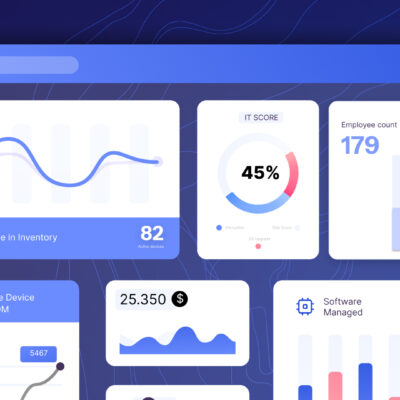5 Hybrid Work Models You Can Use for Your Team
Work models serve as benchmarks for how businesses should operate on a daily basis. They set down work schedules that employees must follow, particularly regarding their place of employment.
When it came to where employees may set up their workstations for the day, traditional work models were mainly office-based and offered employees little to no flexibility. However, that has recently altered, and we are starting to see businesses test out other work arrangements, particularly since the pandemic started.
Today, a lot of individuals can work from home, at coffee shops, co-working spaces, or from anywhere in the globe. So what are the differences between remote and hybrid work models?
What are Remote Work Models?

The remote work paradigm enables workers to work remotely from any location, including their home or a location that is not connected to their firm. In the United States, 70% of the workforce worked remotely in the middle of 2020.
Read more about data about remote work and tips on how to manage your remote teams.
The overall trend is here to stay as businesses learn the advantages of remote work, such as decreased expenditures since there is a lessened demand for office space and employee transportation, even though this figure may somewhat decline after the pandemic. However, as businesses seek to escape lockdown, they are experimenting with various blends of on-premise and remote work management, which takes us to the next question:
What are Hybrid Work Models?

To varying degrees, in-office and remote work are combined in a hybrid work arrangement. Some businesses mandate that employees spend the majority of their time in the office, but they also permit a few remote workdays each week. Others are in favor of giving employees the freedom to choose where they will work. Other different hybrid work models exist, depending on the requirements of certain companies and the teams within them.
Although ensuring good communication between remote and in-office workers is one of hybrid work’s problems, it is undeniably the trendiest workplace setup. It is only now beginning to gain momentum. According to a thorough Microsoft survey, 73% of employees prefer the option of working remotely, thus companies will need to make accommodations.
1. Remote-First

The remote-first (also known as “at-will”) model is one of the most well-liked employment models. Employees are able to prioritize remote work while still conducting on-site work in offices and coworking spaces under this arrangement. Your team members can stay at home or come into the office while working remotely first.
For instance, a person who is more productive at home can choose between coming into the office and staying at home to work. Another employee may freely attend the workplace if they flourish there. In essence, this strategy enables staff to operate in an atmosphere that maximizes their productivity.
By implementing the remote-first strategy, you’re essentially communicating to your team that you have faith in them by allowing them to select where they work. Your team’s morale may improve as a result of the trust that this fosters in your employees.
However, the remote-first paradigm has several difficulties. For instance, you run the risk of having too many employees enter the workplace at once, endangering social distancing norms. Additionally, having too many unexpected guests at once might make the office feel crowded, which is an issue if your physical workspace has been reduced. The remote-first paradigm requires careful team management as a result.
2. On-Site

Team members may choose to work remotely or in the office under both office-first and remote-first hybrid working models. However, employees need to be more present in the actual workplace under an office-first paradigm.
This architecture is simpler to implement and administer since fewer digital or protocol changes are required. Other than adjusting a few aspects of your workplace procedures (such as office attendance), you can carry on with your regular workday.
If your business depends on teamwork to be productive, this can be the best working arrangement. It offers greater flexibility than a conventional approach while providing teams with all they need to perform tasks and projects.
Additionally, for many businesses, the only workable hybrid option is the office-first approach. For instance, if you own a manufacturing or construction company, you require on-site staff. The office-first paradigm, on the other hand, might backfire if your company depends on individual and digital production or if you have distant staff.
3. Synchronized and Scheduled Hybrid

Two choices for schedule-based work are scheduled and synchronized models. These models allocate particular days for both on-site and remote work for your staff. A schedule-based method works effectively when trying to keep your workplace from becoming too crowded.
One department may work in the physical office on Mondays, Tuesdays, and Wednesdays while other teams would come in on Thursdays and Fridays, for instance. Or you may mix and match the days based on what suits your team dynamics the best.
For their employees, several businesses are experimenting with short-term work. The adoption of a four-day workweek has been credited with increasing productivity by corporate behemoths like Unilever and Microsoft.
However, keep in mind that the synchronized and scheduled models might raise business costs, particularly if you’re covering some of your team’s expenditures related to remote working. If you have the additional funds and can live without the lack of team engagement, the split-week strategy may be successful.
4. Weekly Basis

If you’re interested in a schedule-based strategy, take into account the weekly model, however, the divided week isn’t optimal. With this arrangement, workweeks are assigned in accordance with when particular teams must be present in the office. Your teams are free to operate remotely during the other weeks.
Choose a time when each team member must spend a full workweek at your physical office for this model to function. Then, other team members can swap with them by reporting to the office the next week.
This can be the finest hybrid work style for your company if you have a sizable team. This enables you to gradually execute your plan while also drastically decreasing the amount of office space needed for operations (lowering overhead expenses).
However, there is one restriction: the weekly model is rigid. When the impacted team is working remotely, let’s say you need to have an urgent meeting or unexpected difficulties develop in a week. If that happens, you won’t have the team on hand when you need them.
5. Specific Teams

Finally, you may base your facility on staff assignments using the hybrid “designated teams” working model. You can assign certain teams to work full-time and other teams to work remotely. If your company needs specialized staff to be present on-site at all times, this can be the best organizational setup.
Imagine that you manage a plant and rely on daily safety inspections. Specific personnel would need to be there every day, but sales representatives and administrative staff can work remotely.
Using this technique may reduce your spending on utilities and other overhead costs while improving staff productivity. However, bear in mind that the designated teams’ approach could result in a disconnect between remote and on-site workers. Remote workers may find it annoying that their local counterparts are interacting with supervisors and finding out about new prospects.












